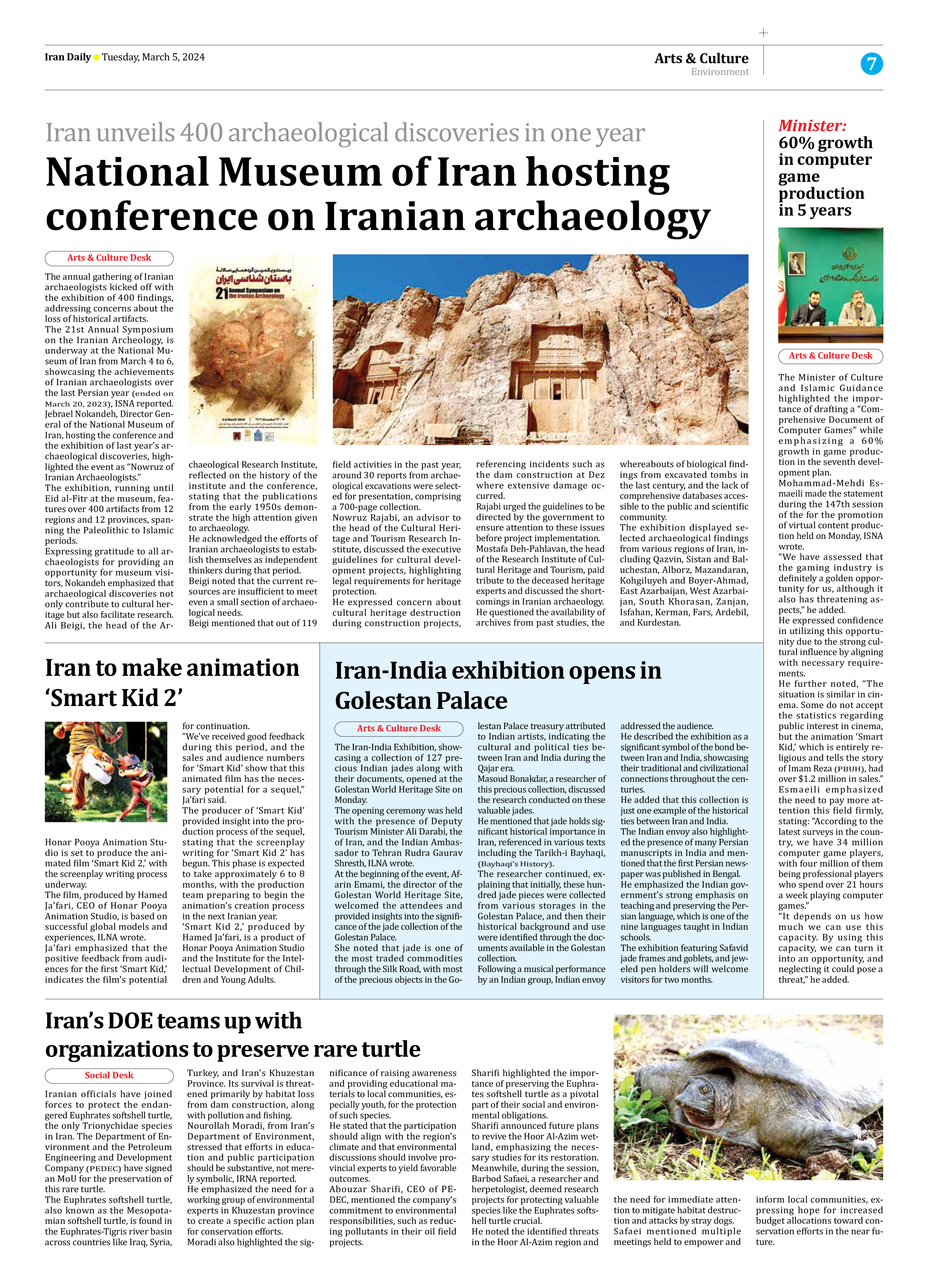
Iran-India exhibition opens in Golestan Palace
The Iran-India Exhibition, showcasing a collection of 127 precious Indian jades along with their documents, opened at the Golestan World Heritage Site on Monday.
The opening ceremony was held with the presence of Deputy Tourism Minister Ali Darabi, the of Iran, and the Indian Ambassador to Tehran Rudra Gaurav Shresth, ILNA wrote.
At the beginning of the event, Afarin Emami, the director of the Golestan World Heritage Site, welcomed the attendees and provided insights into the significance of the jade collection of the Golestan Palace.
She noted that jade is one of the most traded commodities through the Silk Road, with most of the precious objects in the Golestan Palace treasury attributed to Indian artists, indicating the cultural and political ties between Iran and India during the Qajar era.
Masoud Bonakdar, a researcher of this precious collection, discussed the research conducted on these valuable jades.
He mentioned that jade holds significant historical importance in Iran, referenced in various texts including the Tarikh-i Bayhaqi, (Bayhaqi’s History).
The researcher continued, explaining that initially, these hundred jade pieces were collected from various storages in the Golestan Palace, and then their historical background and use were identified through the documents available in the Golestan collection.
Following a musical performance by an Indian group, Indian envoy addressed the audience.
He described the exhibition as a significant symbol of the bond between Iran and India, showcasing their traditional and civilizational connections throughout the centuries.
He added that this collection is just one example of the historical ties between Iran and India.
The Indian envoy also highlighted the presence of many Persian manuscripts in India and mentioned that the first Persian newspaper was published in Bengal.
He emphasized the Indian government’s strong emphasis on teaching and preserving the Persian language, which is one of the nine languages taught in Indian schools.
The exhibition featuring Safavid jade frames and goblets, and jeweled pen holders will welcome visitors for two months.







